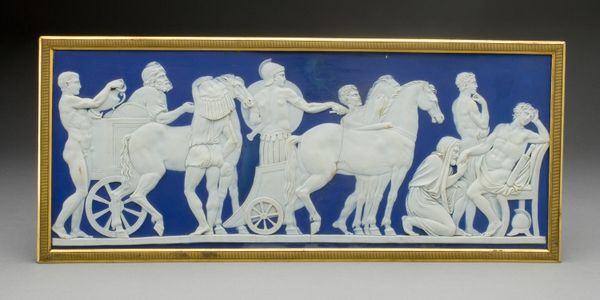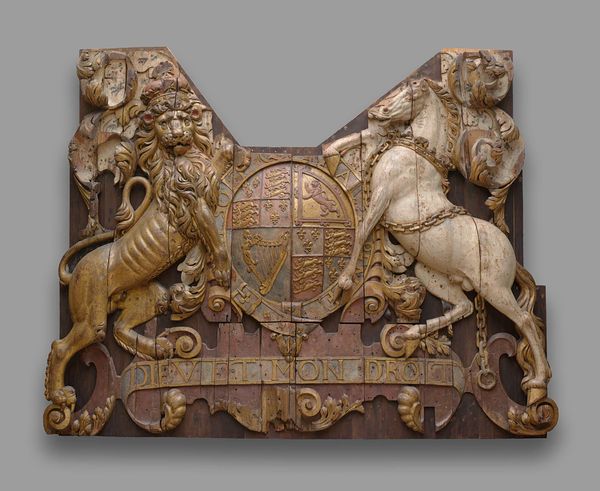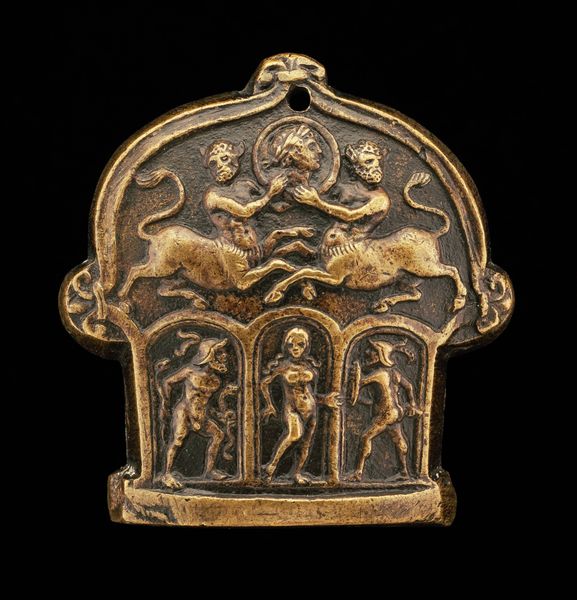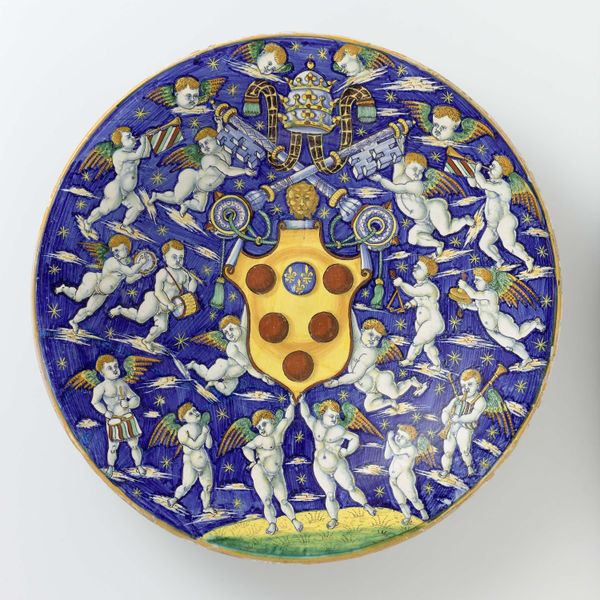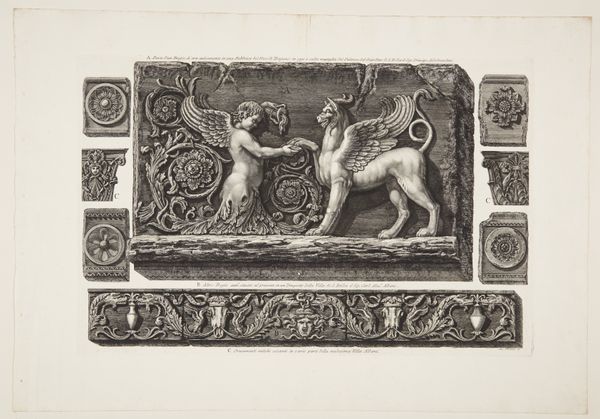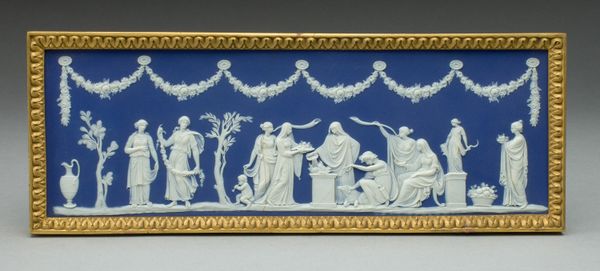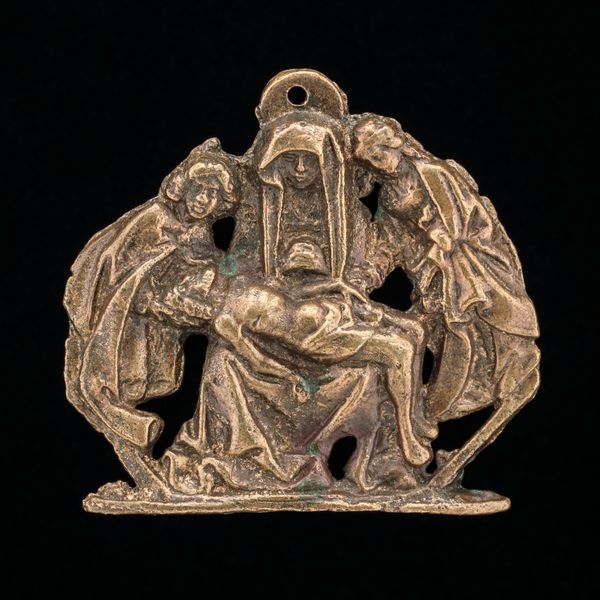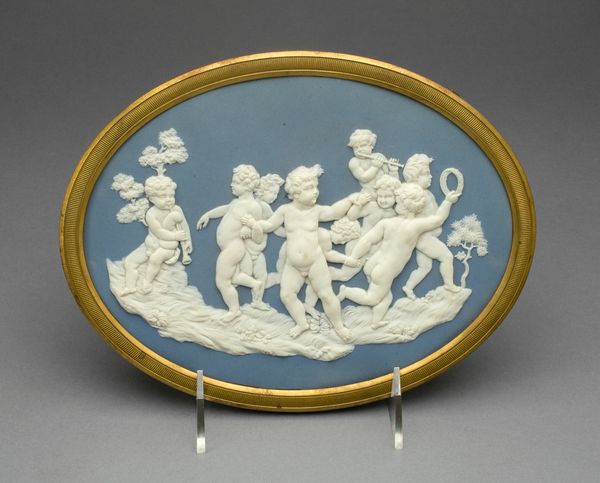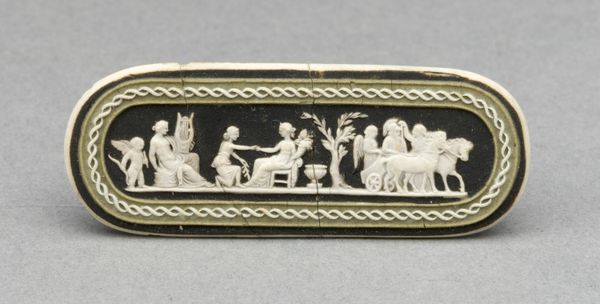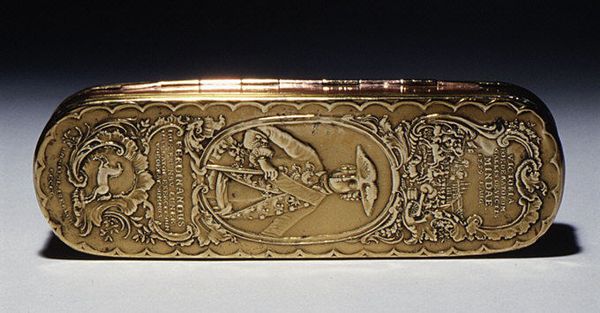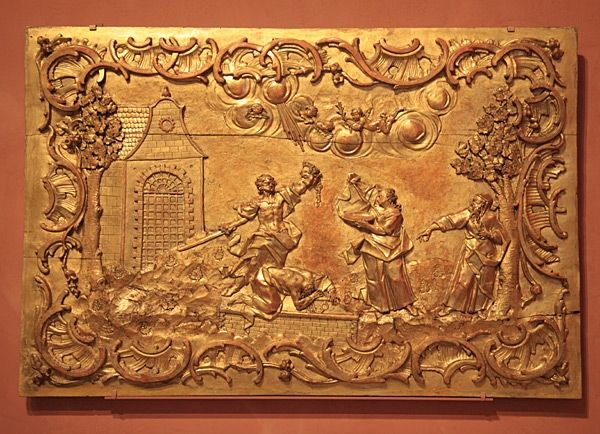
metal, relief, sculpture
#
neoclacissism
#
decorative element
#
metal
#
sculpture
#
relief
#
stoneware
#
sculpture
#
decorative-art
#
decorative art
Dimensions: 2 3/8 x 7/8 in. (6 x 2.2 cm)
Copyright: Public Domain
Curator: Let's examine this selection of Furniture Hardware, created by Henry Kellam Hancock between 1820 and 1830. These metal relief sculptures are currently held at the Metropolitan Museum of Art. What are your initial thoughts? Editor: Well, the immediate impression is of coolness, both literally from the metallic appearance and figuratively from the restrained Neoclassical style. The craftsmanship seems very delicate. The swan motif in particular—its curves and the subtle tooling—is striking. Curator: It's interesting to consider the function here. We are looking at what was, fundamentally, product design—mass-produced decorative elements that could be affixed to furniture by any number of furniture builders and cabinetmakers. Think about the labor involved. What class of people were making the furniture these affixed to, who were the patrons of such work? Editor: I'm immediately drawn to how the material serves to emphasize the clean lines and clarity of form, hallmarks of Neoclassicism. The figures—nymphs, putti, and river gods—possess a serene idealism. Look at the crisp details. It draws on ancient artistic conventions through idealized forms and balanced compositions. Curator: Absolutely, the style evokes classical antiquity, but within an American context. These pieces speak volumes about aspiration and class in the early American Republic. Access to such mass produced decorative forms speaks to a certain access of new found wealth, and new definitions of luxury. Editor: Precisely, the motifs—swans, figures drawn from classical myth—reinforce associations with taste and cultivation of the past. Curator: Yes, so it is about accessibility of luxury to a new emerging class of industrialists. Hancock’s contribution allowed access to classical ornamentation to be integrated in simple furniture making practices by the average workshop. Editor: Considering that accessibility brings up an interesting point. How do we reconcile that democratization with the elitist associations carried by the Neoclassical aesthetic? Curator: It reflects a fascinating tension in early American society: a yearning for refined taste coupled with an egalitarian ethos. The spread of design knowledge, of decorative vocabularies, transforms these motifs. Editor: This examination offers such intriguing possibilities for exploring form and the context of mass production. Curator: Indeed; hopefully this conversation inspires curiosity around materiality, production, and its context with decorative forms!
Comments
No comments
Be the first to comment and join the conversation on the ultimate creative platform.
